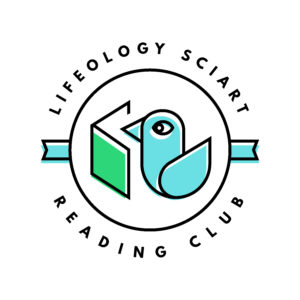
Each month, Lifeology hosts a SciArt Reading Club, which is a live chat about a visual science communication-related reading, over on our Slack space. We invite artists, scientists, and science communicators to collaborate in the Slack space. Alice Fleerackers, an interdisciplinary researcher studying science communication and digital journalism, moderates our SciArt Reading Club chats. Join future chats by joining the Slack and signing up for the newsletter here. The March chat is Wednesday, March 31 at 12 p.m. ET.
For February, the reading was Guerilla Science: Mixing science with art, music, and play in unusual settings by Rosin and colleagues.
The article introduces the idea of Guerilla Science as initiatives that embed science information or ideas into unexpected but approachable contexts such as artworks, public performances, and exhibitions, with a goal of “empowering people with scientific ideas—helping them to see the relevance of science to their lives and in being able to meaningfully use this knowledge.” (p. 2) The reading sparked much discussion.
First, participants were asked if they had participated in Guerilla Science before.
The virtual room was rather split between those who had and those who had not. Alice made a point to say that Guerilla Science can mean so many different things, so some people may be participants without knowing it! On the flip side of that, people learning about science may not realize that they are doing so either. Does this matter?
Much of the time, the best science communication involves shifting people’s focus away from science toward their own interests and experiences, one participant said. Other participants noted that there should be a balance, especially with learning science. When a person realizes that what they are learning is indeed science, they can overcome the idea that science is hard, boring, or irrelevant.
This point opened the discussion to the fact that learning without realizing you are learning can be a pretty powerful idea– like opening the door to a topic that someone may not realize they were interested in. This especially resonated with some participants who are involved in science education.
“I think with kiddos, and adults really, it’s incredibly powerful when things connect, when you can build relationships between one thing and another,” one participant said.
Therefore, the conclusion from participants was that it doesn’t matter if someone knows they are learning something– it’s just important that they learned it!
Is it ethical to connect people with science through guerilla science tactics? In other words, should science communicators be trying to reach people who don’t want to learn about science?
Participants discussed the controversial need to draw a line between marketing or advertising science and communicating it responsibility. The lines are sometimes blurry. It is important to take into account the potential outcomes of your communication, one participant said. You don’t want to manipulate people to trust science, which is what it often feels like when a scientist or science communicator has an agenda. However, Alice noted that the problem can arise especially when there is so much misinformation; sometimes it may seem like the only way to combat it is with persuasion. Participants also talked about trust in science and the need to build genuine relationships before communication is ever needed.
It really matters that scientists and science communicators are transparent about their motivations, conflicts of interest, and affiliations, participants said.
Why might science art, in particular, be a powerful way to do Guerilla Science?
Art gives people agency and they can interpret it in different ways based on their own needs at the time, one participant said. Alice noted that there is value in the open-endedness of art and the ability for it to incite emotional reactions. She proposed that this may be a reason why scientists are wary of communicating their science through art– they can’t control the message or the way someone perceives it. A participant related this back to the need to step away from pushing an agenda. In order to have more ethical and empathetic science communication, we may need to let go of the desire to control our message too much. If the art exposes someone to science, might that not be a great first step?
There was much more discussion woven between these points discussed above. I guess you just had to be there… so be there next time! Join future Sciart Reading Club chats by joining the Slack Space and signing up for the newsletter here. Once you join the Slack channel, you can even scroll up in the #sciart-reading-club channel to see the discussions from previous months. The March chat is Wednesday, March 31 at 12 p.m. ET.




